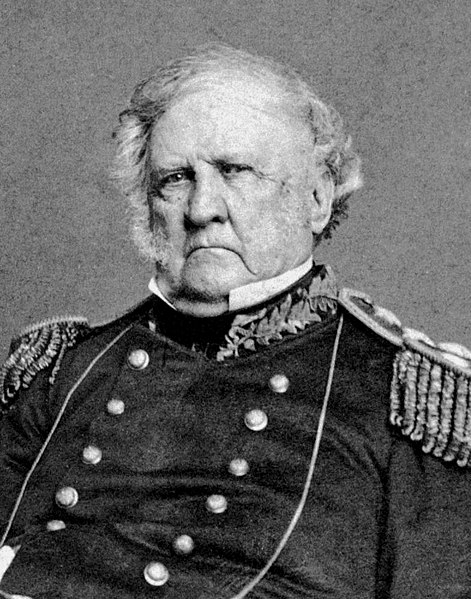The Anaconda Plan was a strategy outlined by the Union Army for suppressing the Confederacy at the beginning of the American Civil War. Proposed by Union General-in-Chief Winfield Scott, the plan emphasized a Union blockade of the Southern ports and called for an advance down the Mississippi River to cut the South in two. Because the blockade would be rather passive, it was widely derided by a vociferous faction of Union generals who wanted a more vigorous prosecution of the war and likened it to the coils of an anaconda suffocating its victim. The snake image caught on, giving the proposal its popular name.
USS Kanawha cutting out a blockade runner at the entrance to Mobile Bay
Winfield Scott was an American military commander and political candidate. He served as Commanding General of the United States Army from 1841 to 1861, having taken part in the War of 1812, the Mexican–American War, the early stages of the American Civil War serving the union, and also in the American Indians wars earlier in his career. Scott was the Whig Party's presidential nominee in the 1852 election, but was defeated by Democrat Franklin Pierce. He was known as Old Fuss and Feathers for his insistence on proper military etiquette, as well as the Grand Old Man of the Army for his many years of service.
Scott in uniform, c. 1862
Bust of Scott by William Rush, c. 1814
Maria DeHart Mayo (1789–1862), portrait by Asher Durand
Winfield Scott age of 49, 1835 portrait by George Catlin





